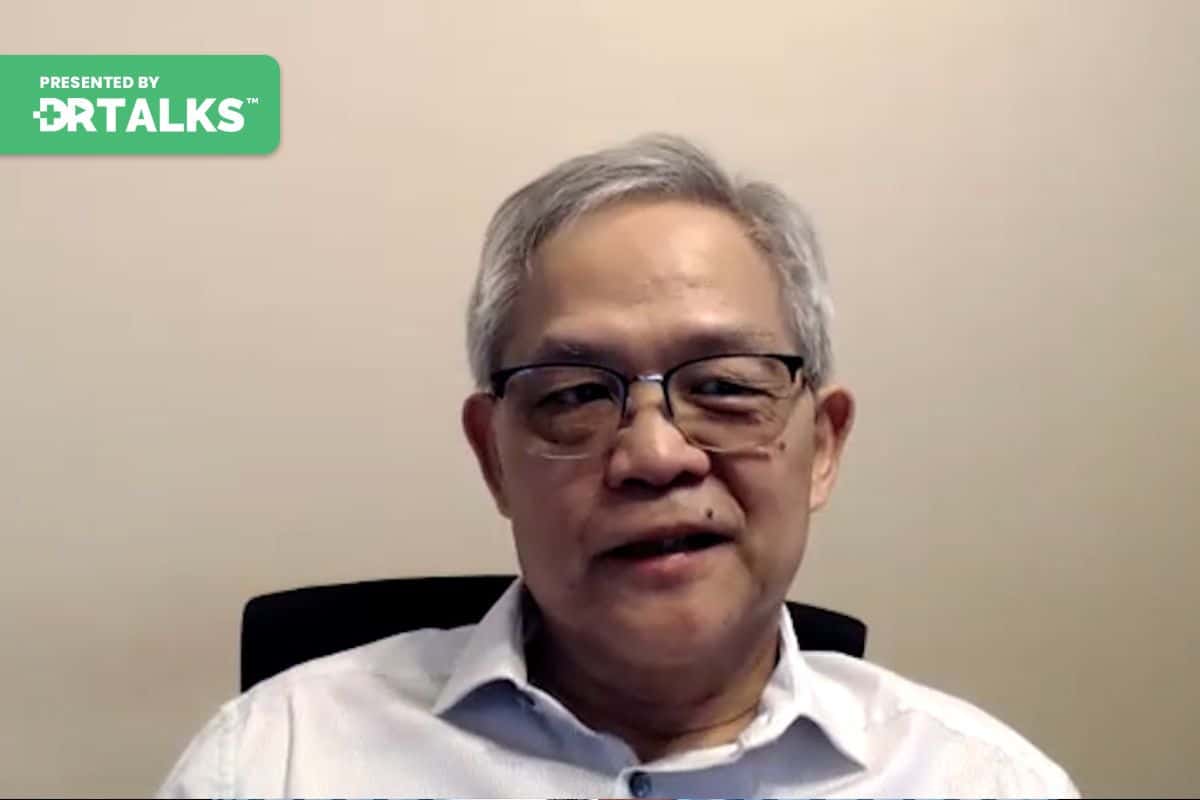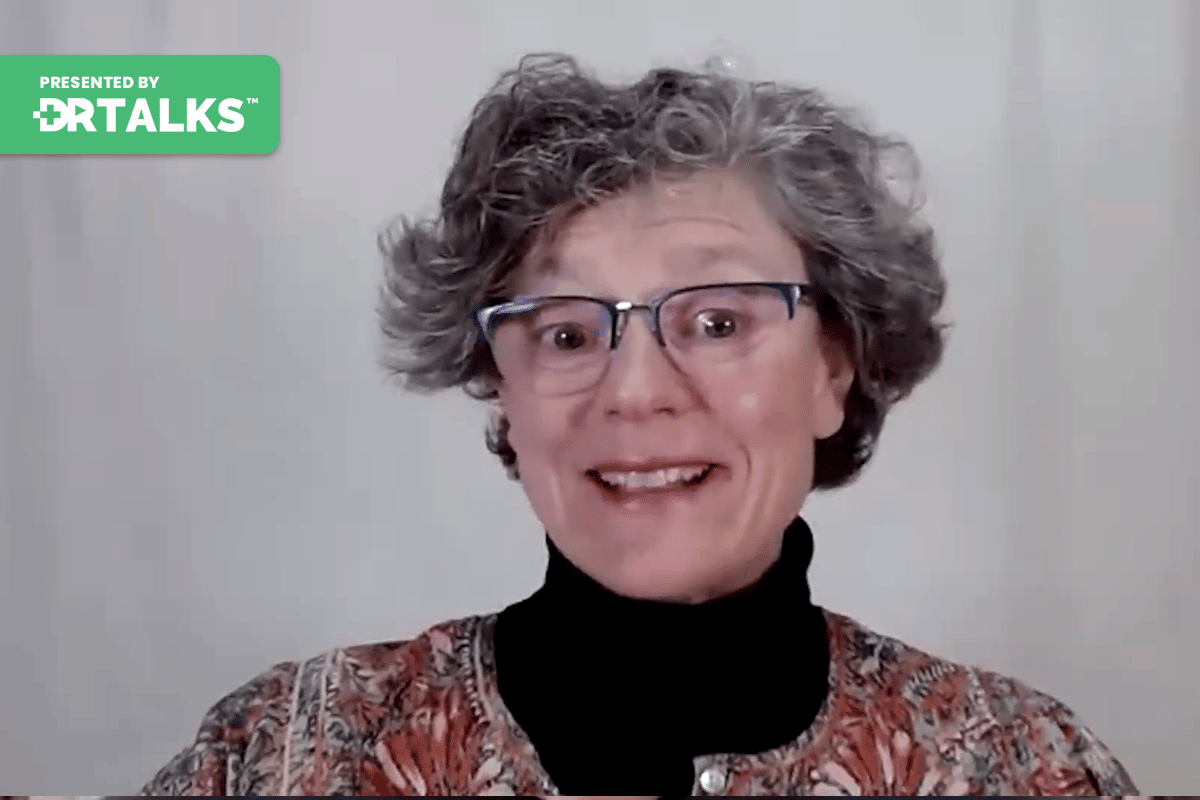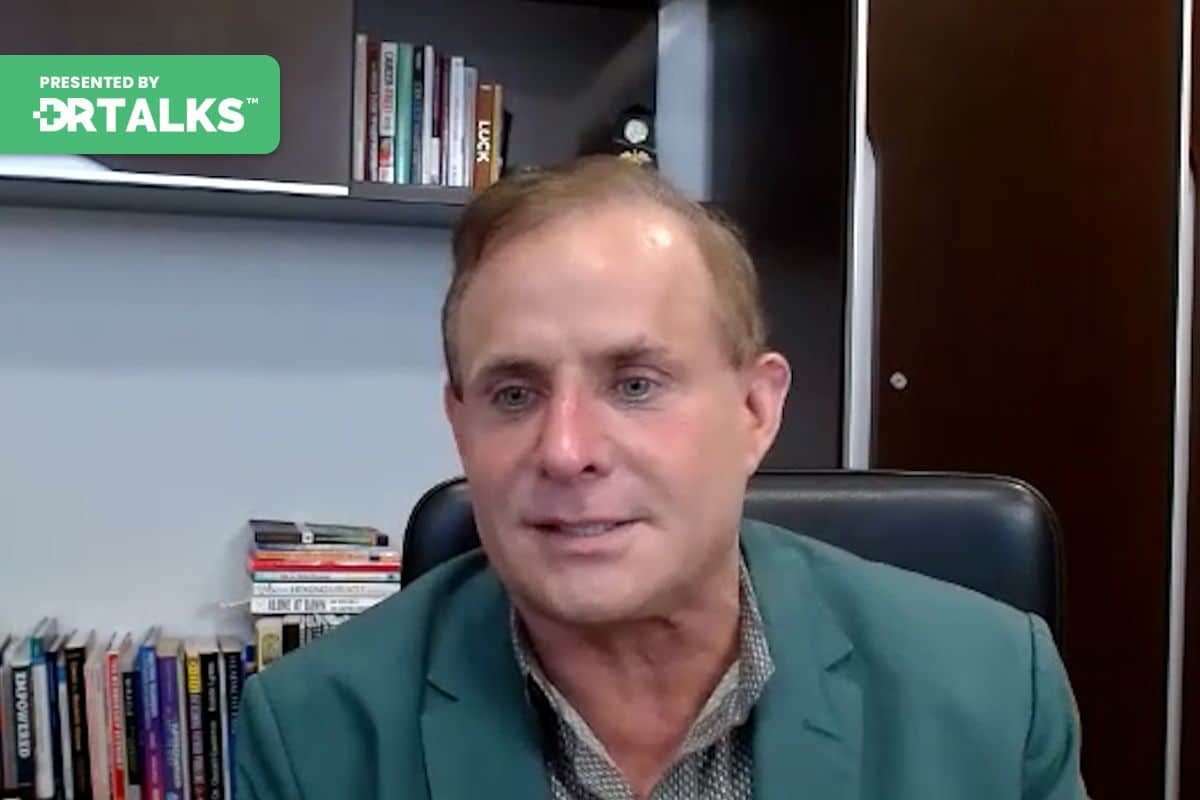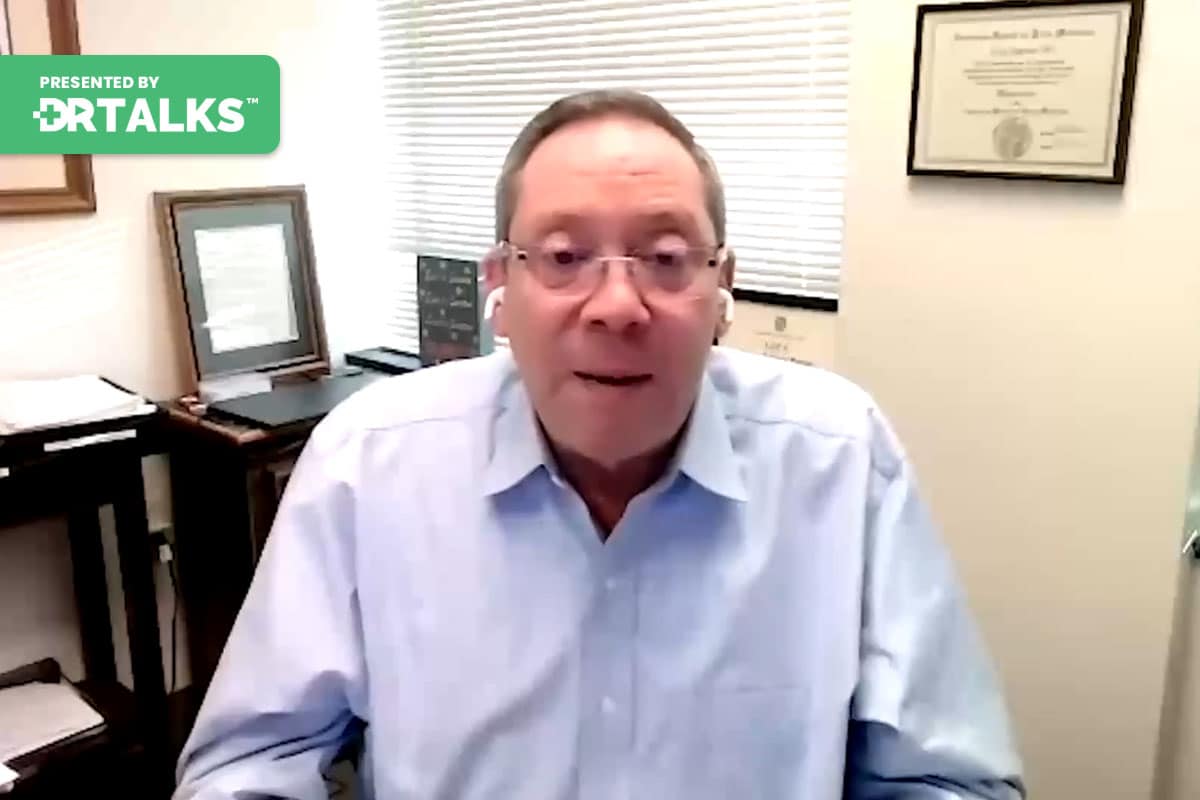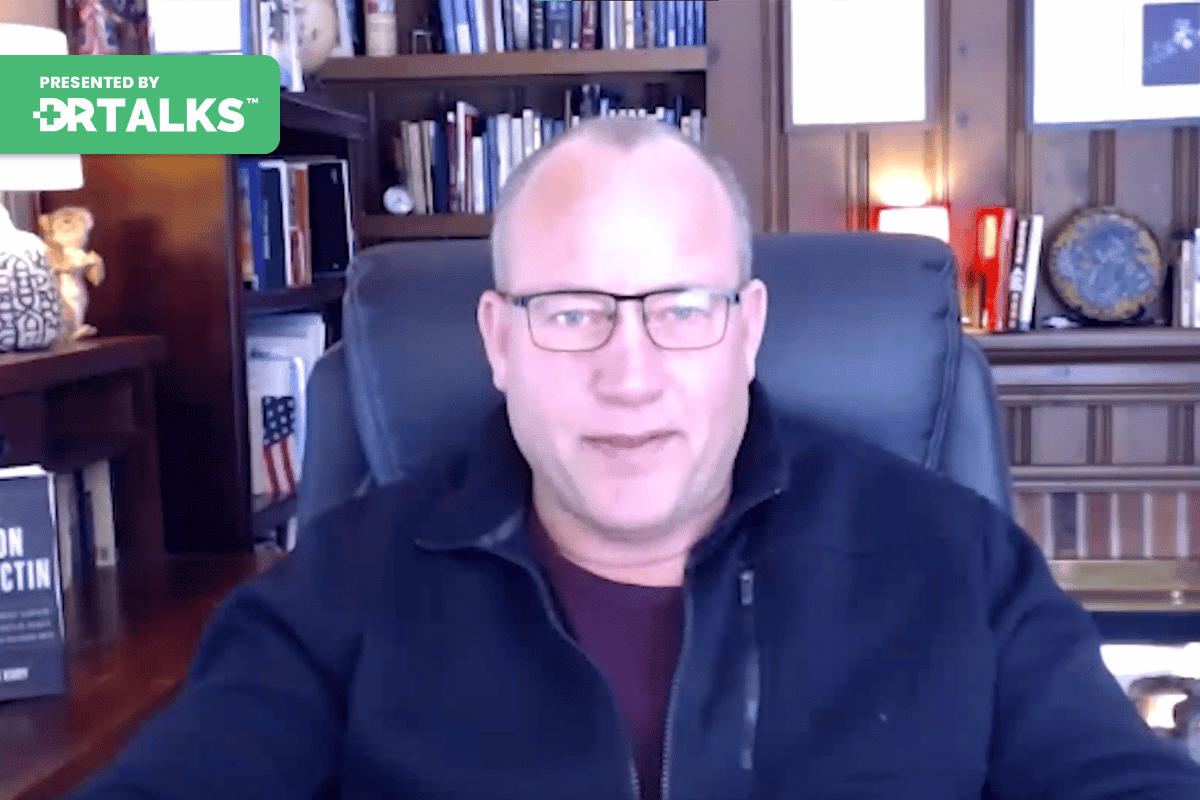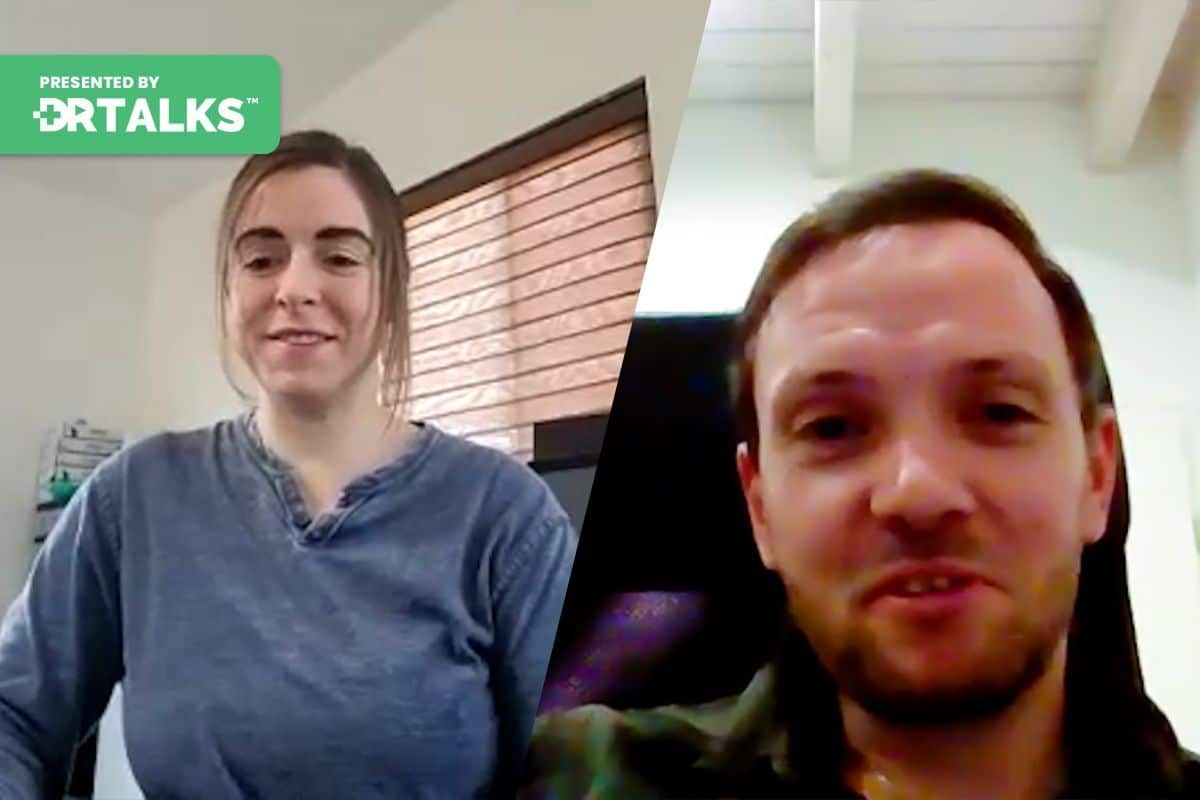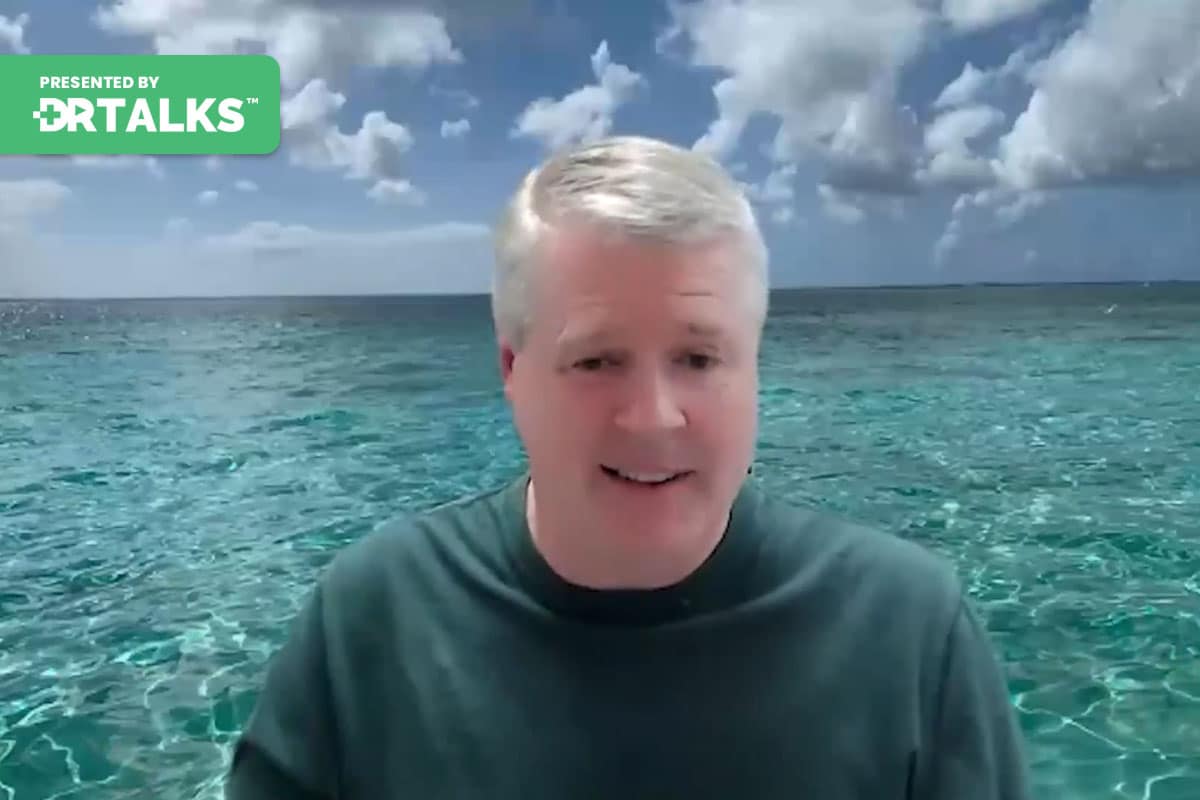Join the discussion below

Nafysa Parpia, ND has an independent practice at Gordon Medical associates, specializing in the treatment of Lyme disease and other complex chronic illnesses such as autoimmunity, mold toxicity, fibromyalgia, environmental toxicity and gastrointestinal disorders. Her patients with chronic Lyme Disease are typically those who either do not do well with antibiotics, or prefer... Read More

Dr. Lew Lim is recognized as one of the major influencers in field of photobiomodulation (PBM), particular in its use for brain health. He leads the team at Vielight that emphasize on the importance of evidence and ground-breaking research. The topic of finding a non-drug solution based on home-use, affordable... Read More
- Symptoms that may respond well to Photobiomodulation
- Data and mechanisms suggest Photobiomodulation to Long Haul that is agnostic to variants
- Review of upcoming Vielight study seeking clearance from the FDA for Long Haul
Nafysa Parpia, ND
Welcome to this episode of the Long Haul Chronic Fatigue Summit. I’m very excited to have with me today. Dr. Lim we’re gonna talk about photo bio modulation devices for long covid and the evidence of how he thinks that they work. So Dr. Lim welcome. I’m so happy that you’re here today. Can you introduce yourself to the audience?
Dr. Lew Lim
Thank you for inviting me. Dr. Parpia. I am the founder and CEO of V Light and as a team and particularly my personal interest we do a lot of work in researching the possibilities of photo by modulation in modulating the brain. So I’m quite excited to share here. I will you know, go quickly and delve into the technology.
Nafysa Parpia, ND
Great so tell us about how photo bio bio modulation works.
Dr. Lew Lim
Well let’s use an example, you know so you can kind of figure out more easily instead of just talking. So this is device that we actually used in a clinical study that we published in preprint but we are under review by FDA and Health Canada right now on the treatment of covid. So in photo by modulation today these sorts of light and we’re talking about delivering light into the body of the brain to modulate cellular functions. So that’s how you get it translated a higher level into physiological outcomes. And here’s an example of so this particular device we call it the X. Plus of that we use for our clinical study on acute covid. The light is delivered out of an L. E. D. Trying to do this with a camera mirror image. Now this is where the light is coming up from the LED. This actually gets inserted into the nose. And here is another LED which is not so visible because it is using near infrared light. And actually this camera doesn’t pick up the rate but basically in the infrared light is invisible. So that’s that example of how it works in our treatment for acute covid. We actually try to deliver the lights into here. The sternum. The bone marrow is where underneath it is the thymus gland. Then you know spread out to the pulmonary pulmonary in the chest or the chest area. And we have this also the nasal attachment like this it just you know you could plug to the main store and a battery like this. So that is the the particular device we used to treat cure Covid. Why do we do this now in photo bio modulation? And I think those who are familiar to some extent on the mechanisms photo by modulation delivers red to new infrared light to the mitochondria of the cells and through its activity in the electron transport chain. You know Mitochondria is well known for producing the cellular energy 80 p. But it does a lot of other things to the outcomes from that is it releases may trioxide is freeze nitrile oxide which are clogged up in mitochondria that are performing sub optimally.
So you listen, nitric oxide back to the body and actually oxide is known to perform vessel dilatation which is to relax to your blood vessels and therefore increase blood circulation. But it does. The other thing why we have in the nose for example is because nitric oxide also inhibit the replication of coronavirus is socorro as with the coronavirus is have this you know spike proteins that are attached to a C. Two receptors and so on. So it doesn’t, the good thing is that is fundamental in coronavirus is doesn’t matter what variant it is. So when we did the study it was on the delta variance that was really the one that does the most the most fatal, the most damage. So now today we have a microphone which is you know not as fatal.
It doesn’t go down too much onto a lower respiratory track. But the point it is inhibiting the replication of coronavirus is and then why do we have it on the chest is because photo by modulation in this process also stimulate the production of stem cells. Stem cells are produced in the bone marrow. And among the stem cells some of it are precursors to become T cells. So they migrate to the timeless underneath to get to be mature and activate and become T cells that as you know, it is part of the immune system. So that is another process. And another thing about photo bio modulation is it produces the mitochondria.
The electron transport chain actually end up producing growth factors and growth factors helpful with healing of wounds, wound healing. So among the literature in photo by modulation we you know you see accelerated wound healing and so on. What’s really important for covid is the control of inflammation. So we had this big problem at the peak of the pandemic, it is the cytokine storm which is really the storm of inflammatory inflammatory factors that end up with your own immune system attacking you know yourself. So you get into this problem and your organs start to shut down again into sepsis And you know when you get into real serious serious state. So that is explaining photo by modulation with a device that we use for investigation.
Nafysa Parpia, ND
Fantastic. I want to hear about the research the studies around photo by modulation in the spike protein. Do you have the research on that yet or is that coming working?
Dr. Lew Lim
So what we did as a primary endpoint for that particular research, we actually recruited like 290 over people with all these you know drop off and refining of the you know defining the base baseline, all this stuff. We actually end up with 100 that we did a detailed analysis when we had all the data. Now we are primary endpoint was to investigate the recovery from a severe state of COVID-19 infection. And compare that against control. So we actually demonstrated that with the use of this device that I showed you, the recovery was significantly faster. And among the secondary endpoints was you know, things like you know, just you know, your runny nose and your state of the brain and so on. Actually you also we’re thinking more clearly. No.
Now with this data, this is actually under review by FDA and health Canada at this very moment. So we’re waiting for the outcomes. You know, we’ve had some discussion with them about, you know, giving more information and so on, but we don’t know what the outcome is like. So we can’t actually go out and say, yeah, you know, 100% for sure. We can, you know, treat Covid 19 until the regulators say yes, we can say that. So for now let’s hold our breath. But we did publish a pre print is I can give you the link, you know, there’s a pre print in medical archive. So you can see all the details there and what we’re doing now is because the outcome was statistically significant as p you know, at 0.50. So we think, okay, it’s about time is really looking to what’s relevant more relevant today, which is long. Covid and we are preparing for that long. Covid has 200 symptoms, can go for all of them. The major symptoms is chronic fatigue and brain fog from our data, we thought, okay, brain fog is a good, a good target to go for.
Nafysa Parpia, ND
Fantastic. So, have you begun that research yet now on Long Covid and brain brain fog.
Dr. Lew Lim
We actually preparing do that in order to get into a clinical trial. Like this is a lot of work. Unfortunately not everybody can get into it. So we are actually finalizing the protocol. Now. We, you know, our primary outcome is really going to be just the whole definition about brain fog and your reaction and your cognition, your memory and stuff like that. We’re using that as the gate for a primary endpoint. But we’re looking at other secondary endpoints as well, like fatigue. And also looking at the possibility look possibly looking at the markets, looking at inflammatory markers, the effect on it, because there’s quite a lot of discussion about inflammatory markers, because the theory today is, you know, the long Covid has a lot to do with the continuing inflammation in your body and also in your brain. So there are theories about it and the device we’re going to use is going to be different from what I show you. I’ll show you in a little while is more emphasis on the brain and why, you know, we’re doing it in some ways. So we’re preparing it now will probably make known to people who are on our, you know our information list when we’re going to do it and we’ll let people know. So
Nafysa Parpia, ND
Very exciting. Now can you tell us how it affects the brain?
Dr. Lew Lim
Well no you know they if you do you follow what’s happening in the world of long covid. The general statement is we don’t really understand how it works. The drug companies don’t have anything in particular. And that’s and they you know if you get long covid they okay forget about remdesivir results to treat acute covid when you’re hospitalized, they actually do infusion. But the recommendation today is back which is antiviral. You know there are two components and then one is antiviral and one is to ensure that your body doesn’t break down the first component. So why do we and that’s because the other things are not sure you we have you know the doctors could be recommending certain drugs to like maybe cortical steroid to actually come down the information.
For example, rheumatoid drugs. You have other things like okay there is thrombosis present in the blood clots in your you know among long covid as that is tested by using some tests like the timers and so on. So they could be platinum this stuff like that, but all of these have not been actually evaluated by the FDA. So they use what is available but so I can talk about the brain part of it. Just about three weeks ago years a couple of researchers and here I thought that was very interesting that they are proposing a longstanding drug that has been used for a. D. H. D. Combining with a antioxidant drug.
So they have followed the pathways and that is kind of also you know what so I got this, I got to respect that. They have done a lot of research already. What was possible. Now the H. H. D. Drugs is to help any connectivity you know bring so you can pay more attention and the antioxidant is to related to you know the information and that is to do with the brain now. That is they thought yeah they actually saw cases any dollar cases where they are improvements among the long covid but there are side effects, side effects like dizziness and dryness in the throat and you know some of the things. So how do you do ahead and head to head comparison with the photo by modulation. No we are going to do a double blind studies which means that we need a sham device. Unfortunately our first one we can’t we can’t possibly do a shame with this because you can actually see you know the light and you can figure it out. So we couldn’t fool anybody. This particular device called a neuro gamma this it’s also used in our dementia studies for alzheimer’s disease and traumatic brain injury. No, we have seen outcomes. So the you know the studies are going they’re independent studies done in University of Utah and they actually they have published abstracts already there in the process of preparing the manuscript for publication presented posters and so on. So there are data to show that this actually does produce, you know, clinical data showing good outcomes.
Now. Why do we want to use something like this first of all is the home use device. All you do is just position it like this and there’s a nasal device then you press a button and it’s on and it shuts off after 20 minutes. You usually don’t feel anything. Why do we do what do we do that? No, the the yield study for brain fog didn’t actually talk much about the antiviral process. But there is quite a lot of discussion among the investigators in the long covid and how it’s happening. And when they are still using packs loaded which is antiviral they are still recommending it for long covid infection because people have reported that they are responding positively not everybody here, we’re talking about a couple of cases they got people excited and that made everyone thinks that you are using antiviral drug and it seems to be producing outcomes.
So there must be some presence of the viral virus in some way. Maybe the virus are not there, but the remnants you know the remnants of the nuclear type of D. N. A. If you like must be presence because the drug seems to be working now. If you think about it more deeply, the information you’re getting maybe is because your body is still fighting this viral remnants, this traces of the virus in your body is still there, your body is still finding it. So if you remove it your body is probably gonna not pay so much attention to you might recover.
So that’s the theory. One theory of why there’s you know this continuing inflammation in the body. The other theory is it’s you know it’s already done damage to the end material cells of your you know all over your body and your blood vessels. So this damage is still there is still causing your body to do something and your immune system is still being activated and doing these things. Now all this is still whether there is the wide viral remnants in your brain, there is actually autopsy to suggest that there might be it’s not very prominent. They’ve been investigating for ever since the pandemic but somehow these inflammatory factors could be getting to your brain and you know, your brain is responding as a result. You get brain fog you know thinking so clearly therefore it is important for us to recognize it and see. Yeah so we should be looking at intervention that could be antiviral if it’s not okay, it could bring down inflammation and it could be improving your circulatory system in some way. So these are you know, some of the things you’re looking at now. The other thing that it may not be so relevant to our device here but there is also investigations to show that the continuing probably long covid could be the you know the the adjustments of your microbiome. So you’re talking about here your you know your parasympathetic system microbiome being disrupted, you were trying to restore it. So that’s so in photo by modulation there is the there’s data to show and it’s coming out of work in Australia to show that it is able to improve the diversity of the microbiome and therefore could be helping want to enough helping with one of the contributing factors of long covid. So these are the stuff we’re doing now when we have this particular device and right into the head we are directing new infrared light to the brain in general. We’re aiming at the default mode network which is a template network of the brain if you like.
And by doing that we are actually through imaging, we have seen imaging where the whole brain actually respond. So by doing photo by modulation we are what we are doing is actually controlling the inflammation in the brain. Hopefully that helps with the brain fall with the thinking, we are improving the circulation. We are actually synthesizing growth factors, brain derived neurotrophic factors that could help with the healing of damaged brain and so on. So that’s the and the other thing is not forgetting that by, it also improved the lymphatic system in the brain sometimes called lymphatic. So there is literature that discusses that. So by putting that in the right area, we could be doing that, removing this, you know, possible remnants of the viral remnants and so on. So that is the the general idea of having this particular device
Nafysa Parpia, ND
Test it so we can decrease inflammation, we can decrease pieces of the virus, we can help change the microbiome and we can also decrease inflammation in the brain. And these are all topics that are very specific to long haul covid. This is a big deal then, right?
Dr. Lew Lim
Yeah. Yeah. So although we have seen any totally, but we really have to do a big clinical trial in that regard and tell the world okay, you know, this is improving your brain function that’s related to long covid. So we need to do it this big clinical trial. So, for now, you know, hold our horses.
Nafysa Parpia, ND
Right? So when you, when you say it does you think you’re talking about your experience, you’re talking about your observations what you’ve been seeing in patients.
Dr. Lew Lim
Yeah, we actually, you know just talking about brain for clarity of thought in general. There was a study done and it actually wasn’t really published that we saw improvements in in recognition in a study that was sponsored by the U. S. Army done at I think it was university, the University of New Mexico. And they actually saw the they did this this assessment that uses they test the soldiers on the recognition of targets and response actually improved you know quite significantly. But the data was not that clear.
So because it was a small sample and you know it wasn’t consistent so it wasn’t really published but we see evidence but we have quite a lot of reports from people who are reporting clearly demanding dementia without dementia. We have a there is a study that is the data is in preparation now and that actually tested at college athletes, college football players and found that the you know the test that they use improved their own field decision making to let’s do the cognition. So I just say that for now and you will wait for the manuscript to be published. And yeah our we mentioned studies that small pilot studies show that you would have impairment. It does improve but again we’ll wait and do a big clinical trial and see how that turns out.
Nafysa Parpia, ND
I love that you’re doing the research around all of this that’s so important I think so that’s great.
Dr. Lew Lim
Hopefully. Yeah
Nafysa Parpia, ND
What I want to know is how many sessions does it usually take Like for those football football players for example it changed their decision making their cognitive function how much
Dr. Lew Lim
I think they were doing it like three times a week. So they actually tested for a whole season and there was they used a test called the Trail making B test which actually follow you know connect the dots and then you get distracted by another elements and you see how your decision making is made. But we do quite a lot of work using you know the cognitive test for Alzheimer’s disease. So that’s if you’re not the only one there is another there are other groups that are using quite similar things. There is a and I feel our work here is very important now we have there is a work that is just published by Boston University literally just a few days ago on four cases of retired athletes who have suffered traumatic brain injury from repetitive blows and they are suspected of developing C. T. E. Which is chronic traumatic encephalopathy. You know you when you have that it is something like 90 That something perhaps 90% of retired football players actually have that when they visit sections on the donated brains. So it is quite prevalent and I thought it’s very important that we investigate his work. And this paper is published, if you have real cases of athletes who can come out and tell you the story. It is actually out there. One particular cases Larry Carr who is now a professor at the University of Utah, how he has recovered from a pretty bad place and he will tell you depression, he wasn’t controlling his behavior, you know, foggy brain. And he was going downhill. But if you talked to him now, I was in conversation within a few days ago, he’s really pretty sharp and you know, we’re discussing about what other studies possible with, you know, with this particular device. So here are some examples of what the possibilities are with the brain.
Nafysa Parpia, ND
Fantastic. Can you tell us a little bit more about Alzheimer’s and I know we’re in the long haul summit, but I want to take a little detour here and hear more about the research around Alzheimer’s and what you found.
Dr. Lew Lim
Yeah. We, so my, my interest in seeing how this goes on and was date back to around the year 2020. We’re talking about more than 10 years ago with a particular particular person whose family seems to be like clockwork. They reach a certain age among the siblings, They get Alzheimer’s disease and he was late 70s or early 80s at a time. And yeah, he was not able to relate, you know, he’s starting to forget names. And we thought we tried actually at a time we only had the inter nasal 8 10 passing attend hurts too. And that actually seemed to reverse this condition. I thought that’s really interesting. And then we when we had the bigger head set like when I showed you we tried that and he continued to improve today. He’s still alert you know he so but that led us to a control study in that time.
We had so from Indonesia we had this device, we had a prototype the pulse standards. We had like didn’t have many subjects five years. Another scar called the M. M. S. C. But what was really well surprising. Not so surprising to me because I’ve seen a case but surprising to the other co investigators. And we, you know, we had also Michael Hamblin from Harvard was part of you know quarters of that and Margaret from Boston University. And we actually saw improvements not just you know at that time we only drug available was every cept which help you to slow down over six months. And after that you’re back to your decline. Now what we saw was actually reversal vicious, you know very very interesting and actually significant. So we with the score it was like two over points but it was very significant to be able to show improvements during the time of what’s interesting was when we stopped. So we had to stop at a certain point when we stop and then we observe actually all the subject went into immediate decline. So we had to break protocol for ethical reasons and quickly getting back into, you know, for back to the device because it was quite scary when people improve and suddenly to go back down to decline. What that taught us is that alzheimer’s disease is much to do with the genes. So in the literature and in studies, you know, there’s some precursors of Alzheimer’s disease. The highly publicized if there’s the A P. O. E. For leo you get more than two copies of risk are higher. Recently Chris Hemsworth, you know the movie star is talking about, you know, he found two copies really, really worried about this.
So yeah, he understands the literature about Alzheimer’s disease and you have other precursor genes. So I think is highly genetic base. So what we have here is actually fighting the activity of the genes and stopping it. So if you stop using this, you know, your genes takeover. So unfortunately we have a home use device that’s easy to use to use Just like press a button and that’s it shuts off after 20 minutes. And we have we started there’s another group that actually did investigation with the device in Texas, they actually found good outcome as well. And we have a study that’s been going going on for years. We’ve been stymied for like 2.5 years because of covid. So we had to stop literally stop the study.
And at that time we were investigating moderate to severe, which is really very difficult to do too because you are highly dependent on caregivers compliance and a bunch of other things. So we are restarting the study again in spring with an updated device that adds one more to, you know, to the back of the head to treat the occipital lobe and the cerebellum. And this time we’re going for mile to moderate because it’s so much easier to do this area. And what we want to do is to do a head to head to head comparison with a recent drug that’s been creating a lot of excitement, a cannon map out of Biogen and Eisai and it seems like every day is probably going to approve it. So we’re gonna try and use the same measures the same amount of time and see how we compare. So we’ll see
Nafysa Parpia, ND
Very exciting. You know, when you’re talking about the genes and Alzheimer’s I couldn’t help but think about long covid and how those inflammatory cited kinds and perhaps pieces of the virus are as they linger in the body. They’re stimulating people’s genes to express, Its just epigenetic. So I know there’s not enough being done on long haul long haul and genetic expression is just too new. But that’s certainly in my mind because we do see that in other complex chronic illnesses that we’re treating. It’s about the environment meets the genes and how that expresses. And I think that people will have different states of brain fog and perhaps cognitive decline regarding long covid. And I do think that is going to be about genetic expression. Of course, yes, the research is not yet, but you know, it’s what’s in my mind for sure.
Dr. Lew Lim
Yeah, Yeah. We shouldn’t underestimate the role of epigenetic and you’re the role of environment and you go under stress and so on. You know, you’re gonna end up producing cortisol the stress, you actually reduce the ability of the body to fight off infection too. So I think that is also the case of saying, you know, look, you know, research for Alzheimer’s disease. I remember a case vividly where this person actually because of his, you know, his problem with alcohol, he fell and you have a brain injury and then actually triggered his Alzheimer’s disease. So, somewhere, you know, so apart from, you know, your genes are there, but you introduced triggers from the environment, you’re gonna get, you’re gonna exacerbate if not just switch you over to a problem. Big problem, right?
Nafysa Parpia, ND
Someone could have long Covid and then they have other environmental exposures, could be too much alcohol or a mold exposure or a big stress. Men who knows what’s going to flare and I think that the light device could help with inflammation in general, whether it comes from covid or not, you know.
Dr. Lew Lim
Yeah, we you know we are looking into a study on depression and you know we think we have a case. There are some studies, the work that came out of Harvard Paolo Cassano initially showed good outcome. Then they did another study that wasn’t very clear. He provided some explanation for it. We we’re not doing that investigation with him but we are starting to do on our own because I feel that you know he had at one, you know delivering photo by modulation in one particular spot but I feel it is depression is very complex. It is involved a lot of part of brain. In fact, just before this interview here, we just had a meeting about about that and how we’re going to do this, this study. Yeah.
And I feel that if we have a chance you know on depression so that is that leads to maybe, you know, it can photo by moderate and calm the brain so you you’re more able to deal with this other external factors that could influence your you know, your ability to resist these problems. Yeah, I think there is the one thing about photo by moderation versus drugs in development of drugs, you have to identify your targets. So you’re able to attract the proteins and deal with it. Photo by modulation is has multiple pathways because it works on the mitochondria and the electron transport chain. Which is very, very fundamental when it gets gets up to the higher expression in the tissues, the physical physiological states. That’s when you start okay, you start differentiating the different conditions. But generally you are treating very, very the fundamental cause of a lot of things. So that’s why, you know, we’re able to investigate photo by modulation and use it for many, many things. But I think the way you deliver it the, you know, the power that those, the contact, you know, all these matters because whether you have it, the reason why we have a device like this, you know, so why don’t we just have like a helmet? Sometimes you see that on the internet, fixed size like a bicycle helmet and put on the head with hundreds of hundreds of ladies. We actually measured everything. We also measured those and we tested everything. So what we try to do is to have contact. Now, when you have contact, it becomes more predictable when you’re advertising Delivery of say 75 million watts, you’re really delivering 75 million watts says 100 million watts. And so our calculation and outcome is based on on that kind of power over a period of time and on the particular spot.
Now if you’re far further away, you know there is going to be Attenuation and there is a law in physics for radiation which is called the universe square law. You literally square the reduction of the dose, you know, by the, by the distance, the distance between the source and the contact point. So when you have a helmet with a fixed size first of all it doesn’t fit all heads but the hundreds of maladies of much lower power. You know the engineering involved, you cannot have too much otherwise create heat. So there’s a separation of you know transparent sheet in between. So that’s already a separation. And then because it doesn’t fit this further contact. So I am not going to disparage it too much. But we did the measurement, the actual power the lands on your scalp is extremely extremely low. So so there’s a reason why we design you know things as it is and we will continue to try to improve it further to you know, future virgins.
Nafysa Parpia, ND
Fantastic. Now people can use these devices at home, correct?
Dr. Lew Lim
Correct. Use it any time.
Nafysa Parpia, ND
Yeah. And so if somebody purchases this to use at home, is there certain programs that that suggested to them or any help from your team? Anything like that. If they have questions.
Dr. Lew Lim
Yeah there is a hold free number, you can contact the company or you can do on the website as a chat. Or you can write at info at vielight.com. Somebody is able to respond. We have something like seven disproportionately large number of researchers in the company. We have something like seven phds and mds in the company. So if customer service is not able to answer questions, they go back to these researchers, sometimes they come back to me. And I know people ask questions online on facebook groups and so on. And it’s been great. I think some of those are quite knowledgeable. They’re able to respond. I think there is a group called I haven’t I don’t normally go online. I don’t have time to check but I think there’s a group called the Light Knowledge Exchanges Independent. There’s nothing to do with it. And they’re quite knowledgeable. But if you want direct answers, I think maybe customers, it is very busy. They can’t get to you immediately. But there’s a chat, there’s other options and you can respond.
Nafysa Parpia, ND
Great, great, great. And so what offer are you giving to our long haul summit attendees?
Dr. Lew Lim
Yeah, I think my team is organizing a discount for attendance for this summit.
Nafysa Parpia, ND
Yeah, that’s great.
Dr. Lew Lim
Yeah. So I think that would be a link somewhere.
Nafysa Parpia, ND
Yeah, we’re going to get a link from you and then you go out to the attendees. Yeah, thank you. I think there’s gonna be a lot of people who want to use this advice and then I should also let people know who are our patients. We do have Dr. Sanjay Manchanda working in our clinic who who offers us to our patients and our patients really. They really love it. I see differences in the brain fog that’s for sure.
Dr. Lew Lim
Yeah. Dr. Sanjay Manchanda is our investigative at so he is based in Tucson as well as the bear and sometimes you know I’m not sure where he is exactly all the time but he is recognized one of the knowledge leaders in meditation in actually stimulating people into meditation. And he knows our device particularly a device called a neuro pro where you can actually do a sweep and have different frequencies. If you’re a long term meditator, if you can get in contact with Dr. Manchanda or in some way you can experiment with a suite at different frequencies while you’re meditating and that at a certain frequency you can switch into a bliss state. I’m using Dr. Manchanda’s Word or you know an altered state. It’s very exciting because with this we are learning more about the brain as well. Yeah if I think somewhere in the website maybe there is more information about these studies. We have another study also in Toronto. We’re working with folks at the university of Toronto and meditation group also. But here we are actually looking at the E. E. G. You know what the presentations in E. G. R. And how maybe in the future we can improve something for long term meditators. Maybe it can be translated to get you know general folks like me to get into a better mindful state. So a lot of these certain things are being done at our end.
Nafysa Parpia, ND
Right. I think that’s going to help a lot getting getting people in a mindful state now especially in this time when you know I say it’s a second pandemic long haulers there’s increased anxiety, there’s increased stress and I think that getting people into a more meditative mindful state can help really calm down the nervous system and come down the anxiety that’s coming with.
Dr. Lew Lim
Yeah exactly. I have personal contact with you know a number of people some young people who actually get into depression over you know the shutdown Some have not recovered yet actually. Yeah. You know brain is very complicated is when we’re talking about depression is not like okay among us healthy people will say get over it. You know do mindfulness can help but there is quite a lot of things going on. It’s not within the control you know these chemical changes and your network is brain networks have changed so it’s you know but definitely control your stress gain your mindfulness practice as much as possible. Yeah.
Nafysa Parpia, ND
Right. But it sounds like your machines can do both right. Like it can help get people into the mindfulness state. It can bring down inflammation in the brain. And does it help with neural plasticity?
Dr. Lew Lim
Yeah. So we did a we published a paper in early 202017 on The effects of 40 hertz gamma frequency on the brain of healthy subjects. And found that we are literally able to to modify the wave forms of the brain when we deliver 40 hertz it increased the amplitude of the fast frequencies between alpha gamma, alpha beta gamma and actually reduced the amplitude of the slow wave like delta theta and too much of delta and theta cause is correlated with inattention A. D. H. D. The inattentive type schizophrenia a bunch of you know other mental conditions. So being able to do that is I think quite used important now the other thing it showed was it improved the connectivity of the brain. So you know we did a graph analysis and saw that yeah after treatment the brain seems to be connecting better. So and yeah brain fall you know I mentioned earlier the introduction of the A. D. H. D. Drugs as the treatment was actually to help in connectivity. And we’ve shown it in our study that too E. G. Data that the connectivity has improved just over one treatment. So we have a lot of good things to look forward to and see what happens in the clinical trial.
Nafysa Parpia, ND
Fantastic. Well thank you for you gonna say something else.
Dr. Lew Lim
Yeah, I just want to say that while we’re going through this investigation to try to validate at the moment without making attaching claims, just say that we are still trying to figure out to confirm these outcomes in clinical trials at the moment. Our devices are available as low risk general wellness devices without attaching medical claims. So just you know, they generally help with your quality of life. This we can say you know with the evidence so far helps with mental acuity. So the general state of mind. But for diseases and specific medical conditions we still have to go out and improve it. So they’re available right now.
Nafysa Parpia, ND
Right well thank you. Thank you for sharing all of that and for being candid about where the research stands right now and also about what your observations are has been so informative. I’m sure the aunt’s gonna I think you could use this here. Yeah. Yeah. So how did they find you? How did they find your website?
Dr. Lew Lim
Yeah, just go to vielight.com And that’s where the website is. There is more information. There’s also if you delve deeper there is also discussions on the evidence that we have accumulated and also the clinical trials were doing. And so I think we are planning for more information to be put on the website.
Nafysa Parpia, ND
Fantastic! Well, thank you so much for joining us today.
Dr. Lew Lim
Well, thank you for this discussion.
Downloads

